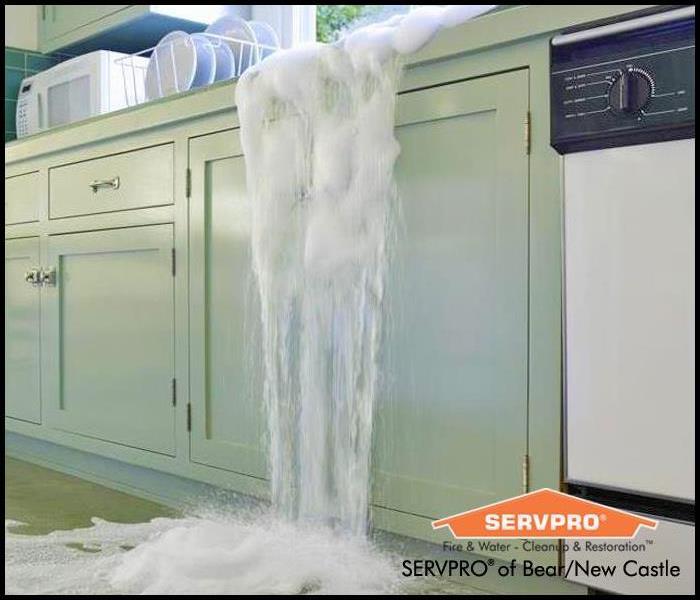How to Minimize the Likelihood of Water Damage Affecting Your Home
10/8/2019 (Permalink)
 SERVPRO of Bear / New Castle is close by and ready to respond to your flood or water damage emergency.
SERVPRO of Bear / New Castle is close by and ready to respond to your flood or water damage emergency.
Water damage can happen at any time. Internal and external forces can damage valuable items, carpets, furnishings and structural components. Even in a well-maintained building, pipes can break, toilets can overflow, and water can seep behind walls and under floors. Waterlines for refrigerators often create concealed leaks that go unnoticed until mold and mildew have accumulated behind the appliance. The same is true for washing machine hoses that have cracked or become clogged. Water damage can also occur after a violent storm, a flood, or several days of steady rain. Basements and lower levels are especially prone to this type of damage.
Water Damage Statistics
Any type of leak can cause property damage and create safety and health concerns. It's easy to think that water damage or storm damage won't happen to you, but statistics say otherwise. Water damage is among the most common causes of property insurance claims. One in every 55 homes will have a water-related property damage claim this year. While you cannot stop a storm, you can follow these steps to prevent water damage.
Kitchens and Bathrooms
Kitchens and bathrooms are susceptible to water damage due to the amount of plumbing in these areas. Fix leaking or dripping pipes promptly, and be aware of elevated humidity levels that could indicate an underlying plumbing problem. Maintain caulk around showers and bathtubs. Water that passes through gaps can penetrate walls and subfloors. If this sealant has cracked or separated, have it repaired. You can probably complete that task yourself.
Appliances
Inspect waterlines for appliances at least once per year. If hoses are brittle, cracked or crimped, replace them before they fail. Turn off the water supply for all appliances before traveling out of town. Pay special attention to hoses for washing machines, refrigerators, and ice makers. Since washing machines have inlet hoses and drains, they are especially prone to leaks.
Protecting Pipes
Protect plumbing from freezing by insulating pipes that travel along exterior walls or through unheated crawlspaces. On cold nights, open cupboard doors, and let faucets drip. Before winter, drain all watering hoses, and turn off valves for exterior faucets. If a pipe does freeze, don't thaw it too quickly. That's how pipes burst. To protect your plumbing, never set the thermostat below 55 degrees.
If an Emergency Does Occur
- Turn off the water supply immediately. Call your utility company if necessary.
- Use mops and towels to remove as much water as possible.
- Turn on fans, dehumidifiers, or air conditioners to remove excess moisture.
- Use wood blocks or tinfoil to elevate furniture from wet surfaces.
- Remove area rugs, table lamps, and colored items to prevent staining and to help dry the underlying surface.
- Place wet sofa cushions and upholstered items on end for faster drying.
- Never use ceiling lights, TVs, or appliances in waterlogged areas.
- Remove books, magazines, and items that may bleed or stain.
- Stay out of areas where ceilings are sagging.
By taking preventive measures, you can minimize the likelihood of water damage affecting your home. If you do experience water damage at your home or business, respond quickly, and call the professionals at SERVPRO of Bear/New Castle at (302) 392-6000.
Why Choose SERVPRO of Bear/New Castle?
For over 20 years, SERVPRO of Bear/New Castle has specialized in water damage repair and restoration. Our highly trained professionals use state-of-the-art equipment and document every step of the drying process, ensuring the job is done correctly from the initial phone call to the final bill.






 24/7 Emergency Service
24/7 Emergency Service